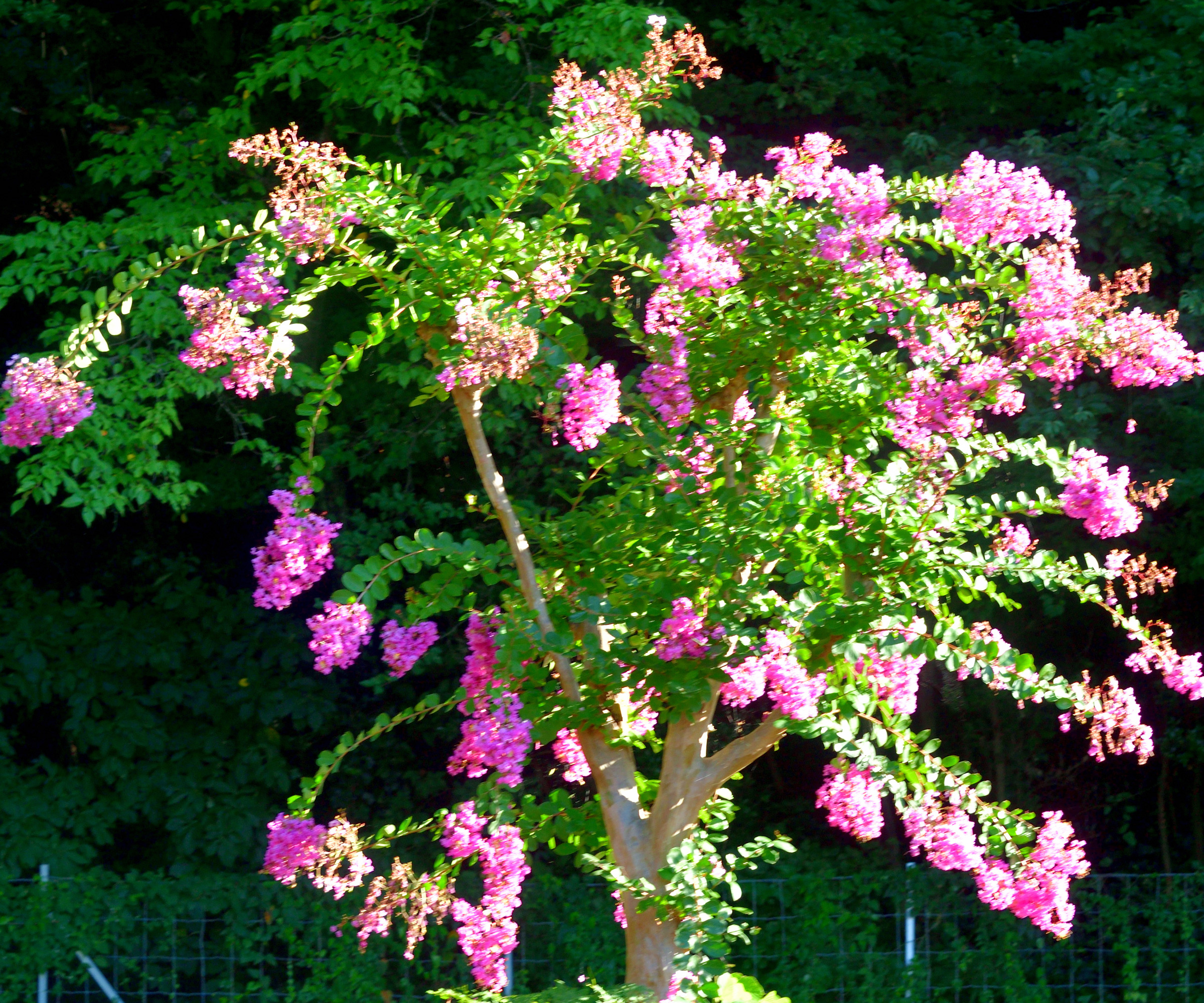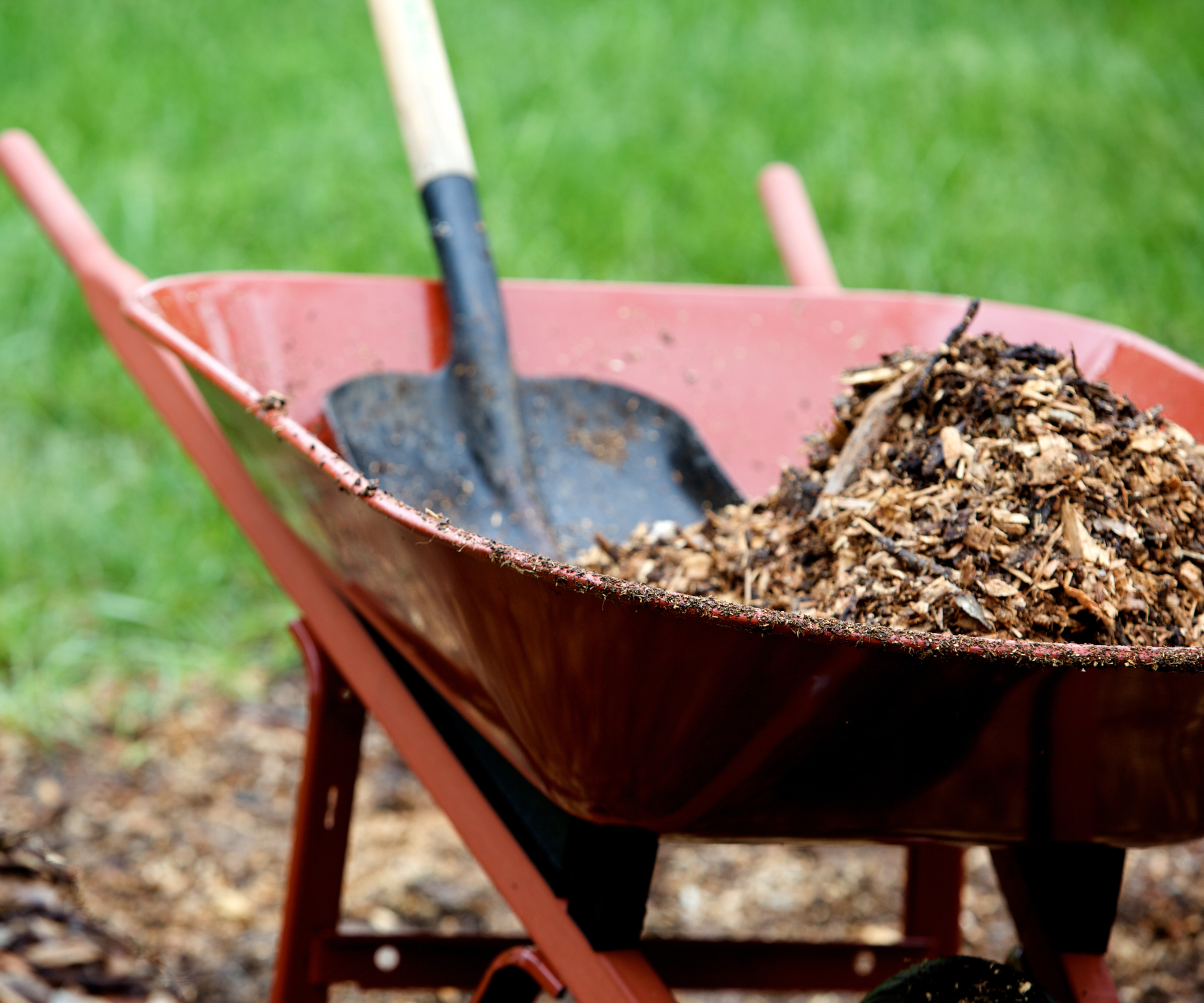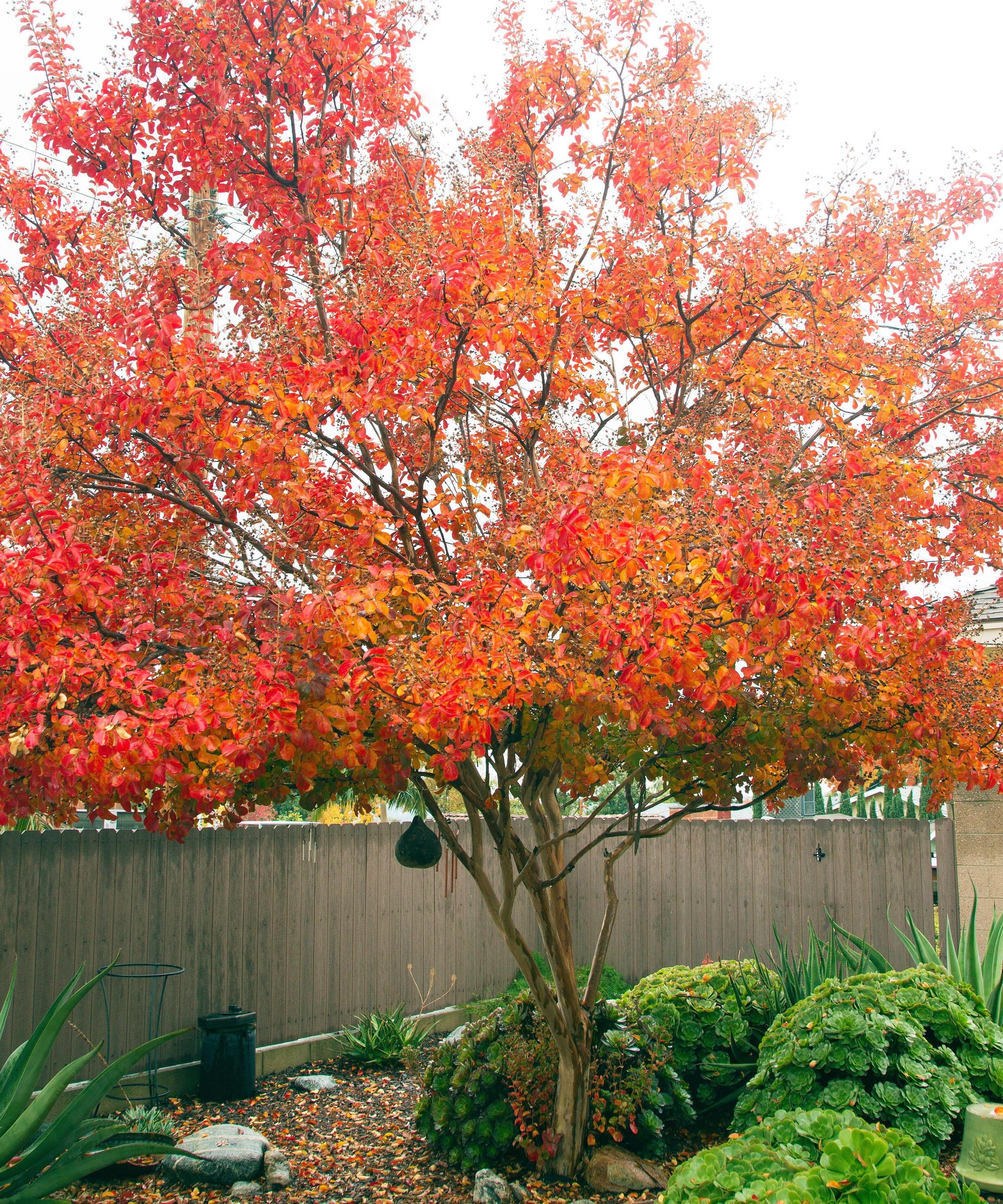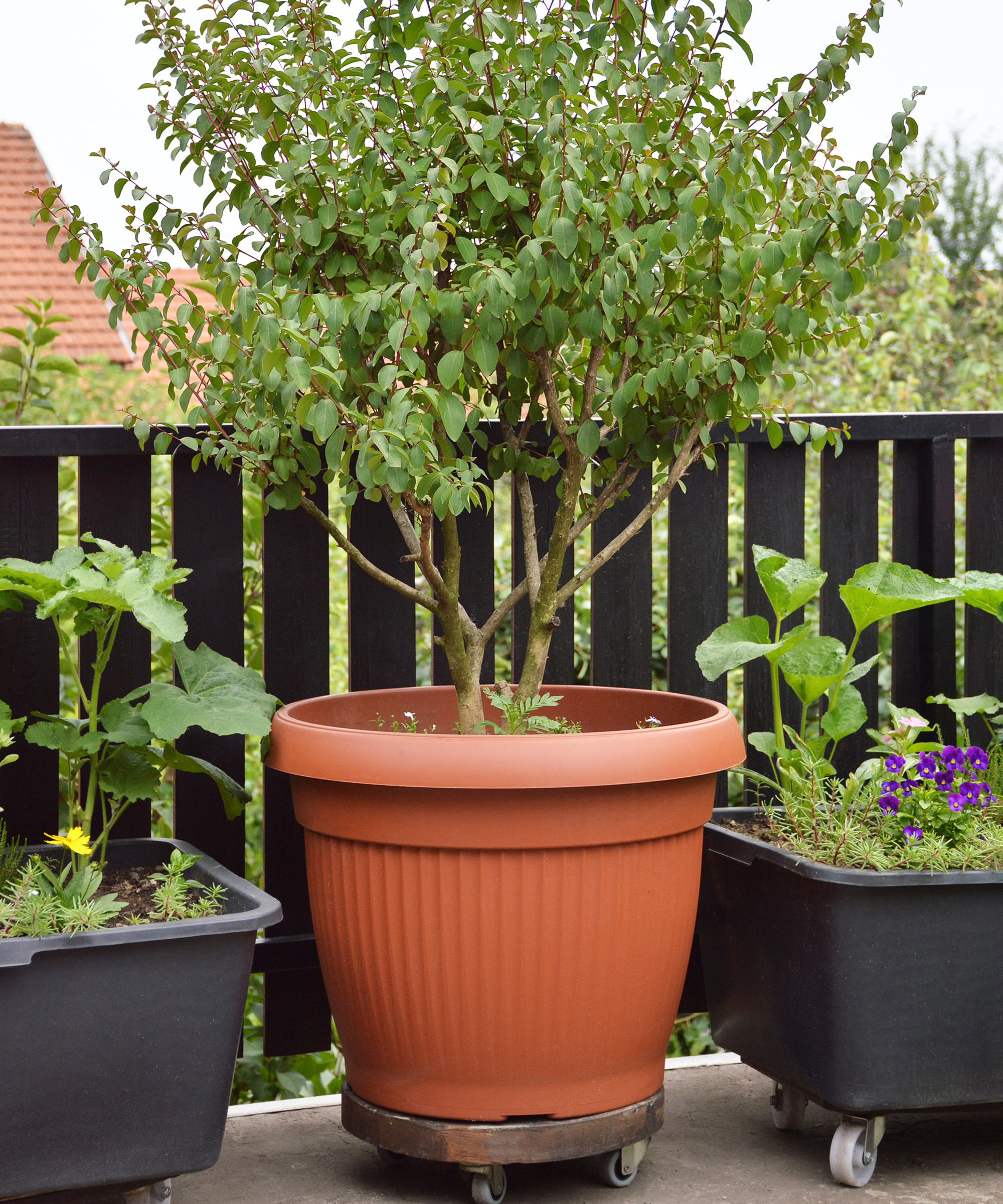
With their spectacular displays of spring and summer blooms, rich fall foliage and unusual bark, crepe myrtle flowering trees and shrubs are a favorite in warmer growing zones. However, if you're growing them where temperatures are prone to drop, it's important to know how to winterize crepe myrtle.
Crepe myrtle (Lagerstroemia spp.) is the state shrub of Texas. It's popular in many other parts of the southern United States too, with streets and gardens filled with these pretty flowering trees. But they're not fond of the cold and will benefit from winter protection in cooler zones.
As well as protecting existing shrubs and trees, late fall is also a good time to plant them. Following our crepe myrtle care and growing guide will help you to increase their number in your yard. In the meantime, protect these fast-growing flowering trees with advice from our gardening experts.
Expert advice on how to winterize crepe myrtle

'Crepe myrtles are a favorite of mine. Thanks to their stunning summer blooms and rich bark textures, they add year-round interest,' says Maureen Wright, plant expert at Fast Growing Trees. 'In US hardiness zones 6 and below, crepe myrtles need winterizing from late October to early March to avoid frost damage, which can harm new growth and reduce the next season's blooms.'
Kat Aul Cervoni, founder of Staghorn Living, adds: 'NYC is now classified as zone 7b for plantings, which although not great news for climate change, it does mean that most crepe myrtles now fall into our hardiness zone.
'This means they’ll survive a typical winter without much issue of dieback in the branches, which was a concern in years past when winters were consistently colder.'
Paris Lalicata, plant expert at The Sill, agrees, adding, 'Larger, mature crepe myrtles are generally hardy enough to withstand winter conditions without much intervention, in areas where temperatures don’t fall significantly below freezing.
'However, smaller or newly planted crepe myrtles in zones 7-10 may need protection during their first few winters, since they haven't developed extensive root systems yet, making them more susceptible to freezing temperatures.'
Here are three key steps to successfully protect and winterize crepe myrtle.
1. Apply mulch to crepe myrtles

Applying a layer of mulch to the base of shrubs, plants and trees in the fall can help to insulate them and warm the soil beneath, protecting them from frost and freezing temperatures through the winter. Mulching will protect crepe myrtles too.
'I find that a 3-4 inch layer of mulch around the base works of a crepe myrtle shrub or tree wonders to insulate the roots,' says Maureen Wright.
'Mulching around the base and wrapping trunks with burlap or frost cloth will help protect against freezing temperatures,' says Paris Lalicata. 'Crepe myrtles typically need winterizing in USDA hardiness zones 6 and below, where winter temperatures can drop below their cold tolerance.
'They may suffer damage if temperatures drop below 0°F (-18°C). In these regions, winterizing is recommended, particularly for younger or potted plants.'
Whether you use compost, leaf mold or wood chippings, a generous scoop, like this one from Burpee, is handy for moving mulch to your shrubs and trees.
2. Wrap the trunks in burlap

Although crepe myrtle's attractive, peeling grey and brown bark is part of its appeal, wrapping the trunks can protect trees from winter weather, especially if you live in a zone prone to frost and freezing temperatures.
'In colder climates, wrapping the crepe myrtle tree trunks with burlap helps protect them from freezing,' adds Maureen. 'I also avoid late-season pruning to keep the plant strong through the winter, then I can enjoy its full beauty in the warmer months.'
'In areas with extreme cold, even large established crepe myrtles might benefit from extra mulch or wrapping with burlap or frost cloth if temperatures drop below their hardiness level,' says Paris.
Natural burlap like this roll from Amazon blends better with the landscape than some other options.
3. Protect potted crepe myrtles

If you have crepe myrtle in zone 6 or below, a good way to grow it is as part of your container gardening ideas. This way, you're able to move it to a sheltered spot in your yard, or indoors, before the cold weather hits.
'Crepe myrtle shrubs or trees in pots are more vulnerable to cold temperatures, because their roots are exposed to freezing temperatures without the insulation that in-ground plants get,' says Paris. 'This makes them prone to root damage, so they will likely need extra protection during winter.
'Move any crepe myrtles in containers to a sheltered area, such as a greenhouse, garage or shed. Alternatively, insulate the pots by wrapping them with burlap or blankets to protect the roots from freezing. It's also worth adding mulch to the top soil.'
'Although we're in zone 7b, we do find that crepe myrtles, and other plantings, can be more sensitive to the cold if they’re being grown in a planter - especially on an exposed rooftop or terrace where they don’t benefit from the insulating effects of the ground,' says Kat.
'In cases where we’re planting a tree-from crepe myrtle on a rooftop or terrace in zone 7b, we take extra care to make sure that they are well-mulched in late fall to help provide a bit of extra insulation.
'We also use cultivars that are bred to be more cold-hardy, such as Muskogee (lavender blooms), Tuscarora (pink blooms) and Natchez (white blooms).'
If you plant this beautiful Tuscarora crepe myrtle from The Sill now, you'll be able to watch its hot pink flowers bloom next spring.
Knowing how to protect container plants from winter weather is essential in the colder regions, if you want them to survive.
However, if you've planted the best crepe myrtle for your hardiness zone, and given it the right winter protection, you can look forward to a spectacular show when spring rolls around again.







